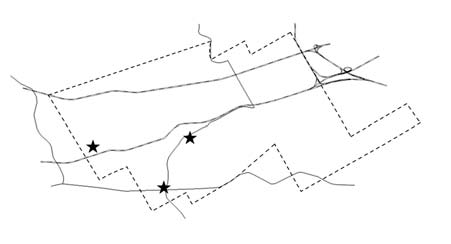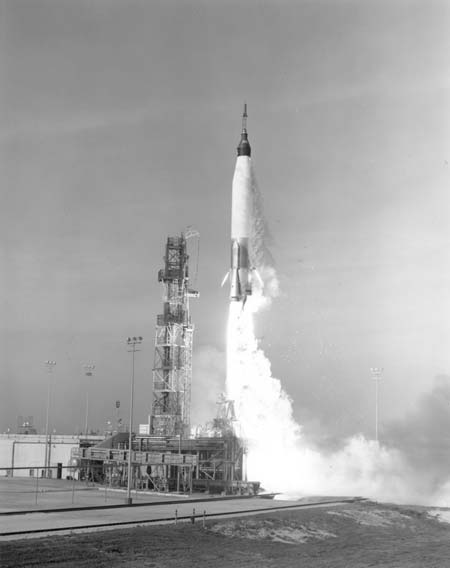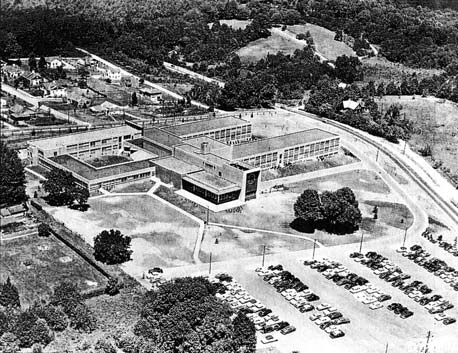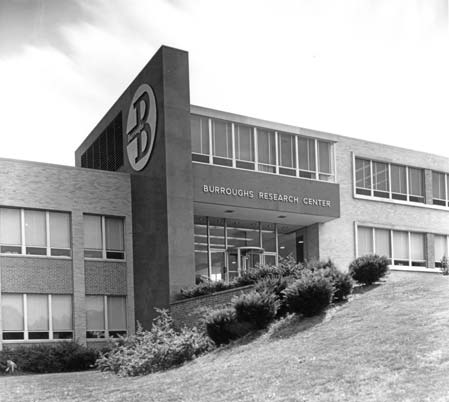|
Home : Quarterly Archives : Volume 44 |
Tredyffrin Easttown Historical Society |
|
Source: Winter/Spring 2007 Volume 44 Numbers 1&2, Pages 74–75 The Burroughs Research Center in Paoli
After ENIAC, the first electronic computer, was introduced in 1946 at the Moore School of Electrical Engineering at the University of Pennsylvania, the electronic computing industry began to rapidly expand. The Burroughs Corporation already had an old laboratory in Philadelphia, but by the early 1950s the company wanted a university campus setting for an electronic research laboratory. In 1951 they decided on a section of the John H. Dingee estate in Paoli; a 12 acre plot bordered by old Route 202—now Route 252—on the east, Central Avenue on the north, a Devereux Foundation property on the west, and the Pennsylvania Railroad tracks on the south. John Dingee had purchased about 100 acres here in the late 1800s on both sides of the railroad for his handsome country estate with its extensive barns and magnificent mansion, Fennerton, and lawns and shade trees. By February 1954 the new $5 million, 105,000 square foot Paoli facility was ready. It had two long two-story research wings, an administrative quadrangle, a cafeteria, auditorium, and library. The main entrance was on Central Avenue and there was a 200-car parking lot in the rear along the railroad tracks. The original staff of 383 employees were mostly mathematicians, physicists, electrical and mechanical engineers, and support personnel. The Burroughs Paoli Research Laboratory concentrated on defense contract work for the government. For the U.S. Army it developed radar listening stations and control center communications systems. For the U.S. Air Force it developed ground guidance systems for missiles and for the Atlas rockets launched at Cape Canaveral. It also developed the automated system for warning and surveillance data at the NORAD combat operations center in Cheyenne Mountain near Colorado Springs.
Atlas rocket Burroughs at Paoli also produced business and non-military systems: the Optical Character Recognition system developed for the banking industry, the ground guidance system for John Glenn's first orbit of earth in the Mercury spacecraft, the Telstar communications system, high-speed equipment for processing radar data for air traffic controllers developed for the U.S. Federal Aviation Authority, high-speed letter sorting equipment for the U.S. Post Office, and the installation of airport runway light systems at many U.S. airports.
Paoli site in 1954 The Paoli facility was almost immediately too small and in 1955 Burroughs added 2 more locations. It purchased the 104 acre Jacobs farm in the Great Valley near the southwest corner of Swedesford and Cedar Hollow Roads where it built a 28,500 square foot facility for production and research and erected two 65-foot radar towers for simulation and testing. This location came to be known as the Great Valley Laboratories. Burroughs also leased and later owned 10,000 square feet in a Modern Dunnage Manufacturing Company building near the intersection of old Route 202 and Howellville Road for the development and production of specialized electronic systems. This location came to be known as the Howellville Laboratory. All three locations were collectively known as either the Paoli Research Center or the Burroughs Research Center and by January 1958 the center had 1,800 employees. In the mid-1980s the computer industry was depressed and there was increasing competition from IBM and Japanese manufacturers. In 1986 Burroughs acquired the Sperry Corporation, a Blue Bell company that had focused on submarine navigation systems and radar systems, as well as its own range of computers. Their new name was Unisys. There were problems from the beginning: the two companies manufactured mutually incompatible systems, they both supported mainframe systems using proprietary software when the industry was moving toward smaller networked systems using open systems, and the Sperry administrators were fined $190 million in the Ill Wind Pentagon case where Pentagon officials had been bribed to obtain military contracts. By 1987 all of these factors, coupled with an overall economic downturn, led Burroughs to begin announcing employee cuts and the sale of buildings. In 1988 there were 3,300 Unisys employees working in Chester County. Locally, the Great Valley facility was sold first for $25 million in the middle of 1990. Unisys leased back some of this space and an Unisys building still stands today at this location at 2476 Swedesford Road. The Howellville Laboratory was torn down and is now the site of the Southpoint office park on Route 252.
Entrance to Burroughs Research Center, Paoli The Paoli facility was sold in 1992 for $1.3 million. In 1994 a six building condominium complex for adults 55 and older, Paoli Pointe, was built in this location. An additional one building assisted living unit, Highgate at Paoli Pointe, was added in 1995. |
| Previous Article ⇐ ⇒ Next Article |



